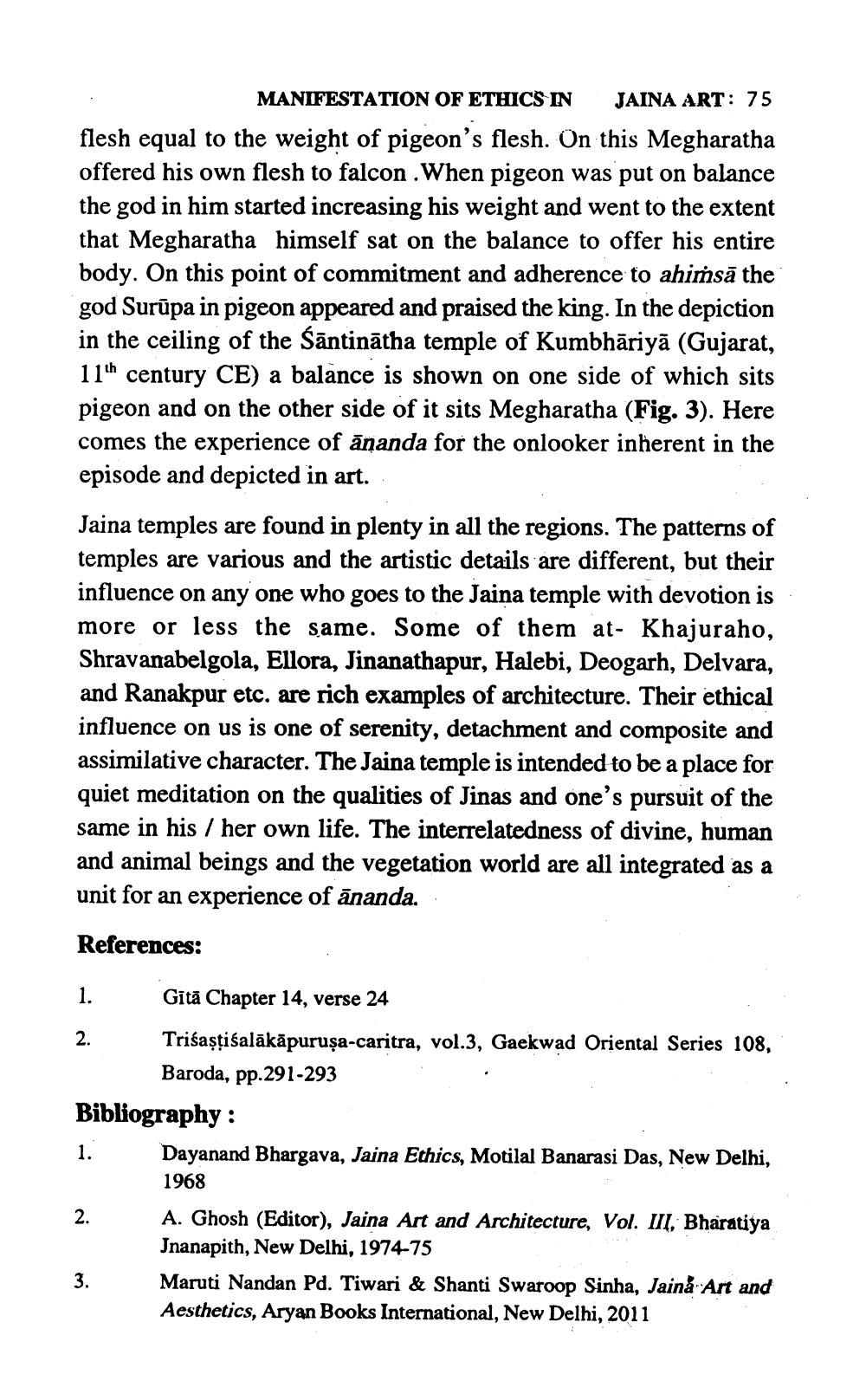________________
MANIFESTATION OF ETHICS IN JAINA ART: 75 flesh equal to the weight of pigeon's flesh. On this Megharatha offered his own flesh to falcon. When pigeon was put on balance the god in him started increasing his weight and went to the extent that Megharatha himself sat on the balance to offer his entire body. On this point of commitment and adherence to ahimsā the god Surūpa in pigeon appeared and praised the king. In the depiction in the ceiling of the Sāntinātha temple of Kumbhāriyā (Gujarat, 11th century CE) a balance is shown on one side of which sits pigeon and on the other side of it sits Megharatha (Fig. 3). Here comes the experience of ānanda for the onlooker inherent in the episode and depicted in art.
Jaina temples are found in plenty in all the regions. The patterns of temples are various and the artistic details are different, but their influence on any one who goes to the Jaina temple with devotion is more or less the same. Some of them at- Khajuraho, Shravanabelgola, Ellora, Jinanathapur, Halebi, Deogarh, Delvara, and Ranakpur etc. are rich examples of architecture. Their ethical influence on us is one of serenity, detachment and composite and assimilative character. The Jaina temple is intended to be a place for quiet meditation on the qualities of Jinas and one's pursuit of the same in his / her own life. The interrelatedness of divine, human and animal beings and the vegetation world are all integrated as a unit for an experience of ānanda. References: 1. Gītā Chapter 14, verse 24 2. Trišașțiśalākāpurușa-caritra, vol.3, Gaekwad Oriental Series 108,
Baroda, pp.291-293 Bibliography: 1. Dayanand Bhargava, Jaina Ethics, Motilal Banarasi Das, New Delhi,
1968 A. Ghosh (Editor), Jaina Art and Architecture, Vol. III, Bharatiya Jnanapith, New Delhi, 1974-75 Maruti Nandan Pd. Tiwari & Shanti Swaroop Sinha, Jaina Art and Aesthetics, Aryan Books International, New Delhi, 2011




